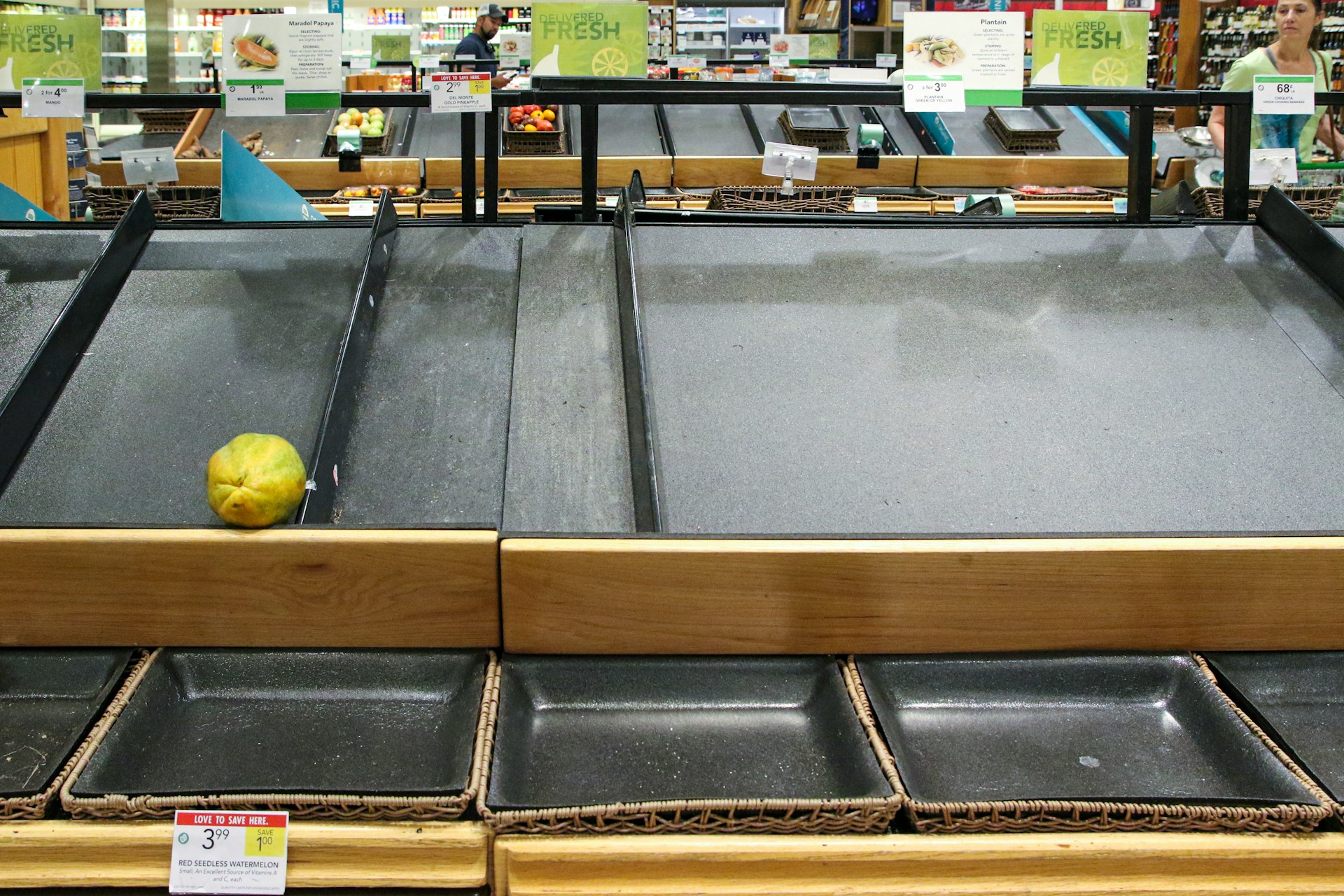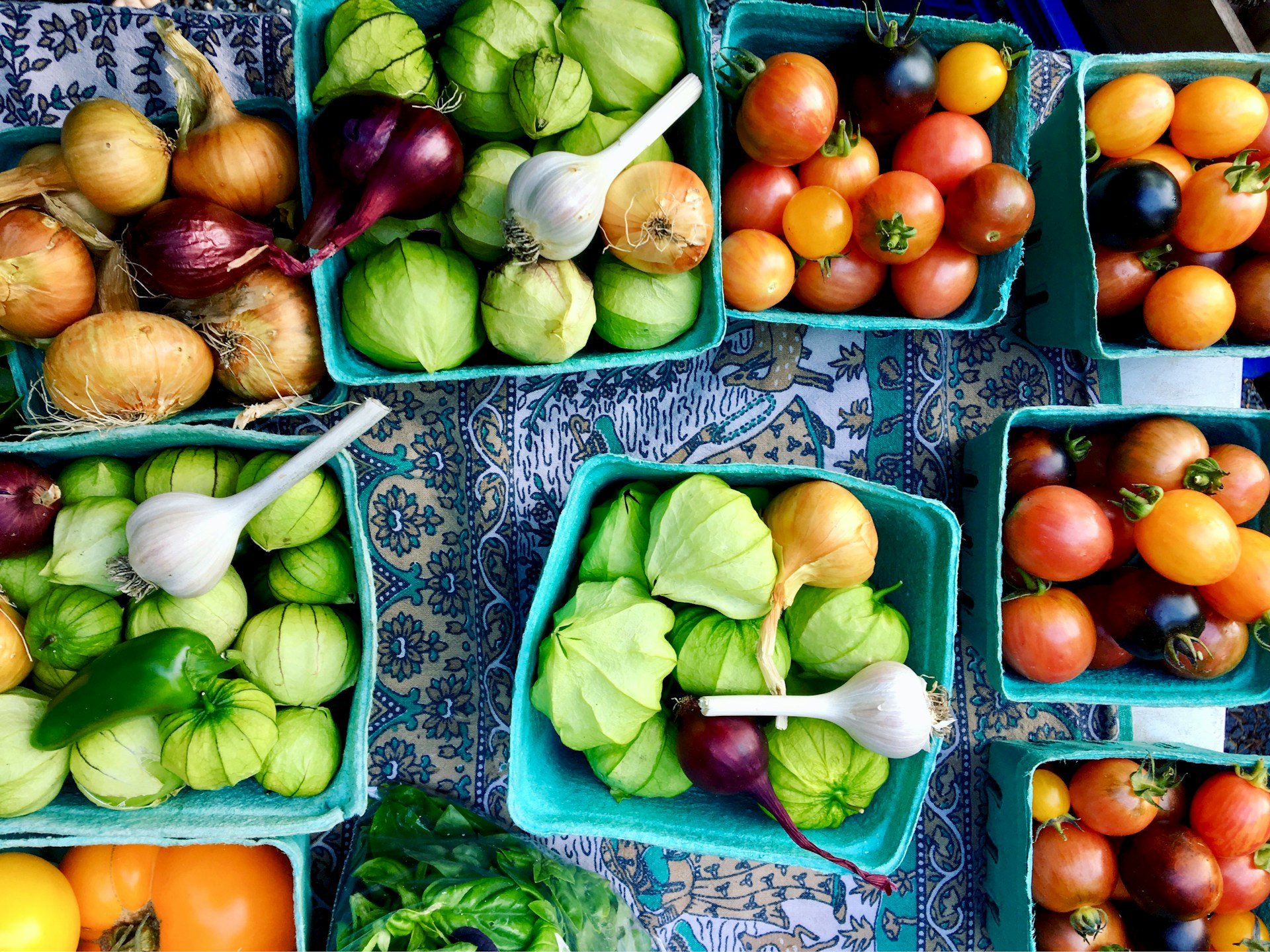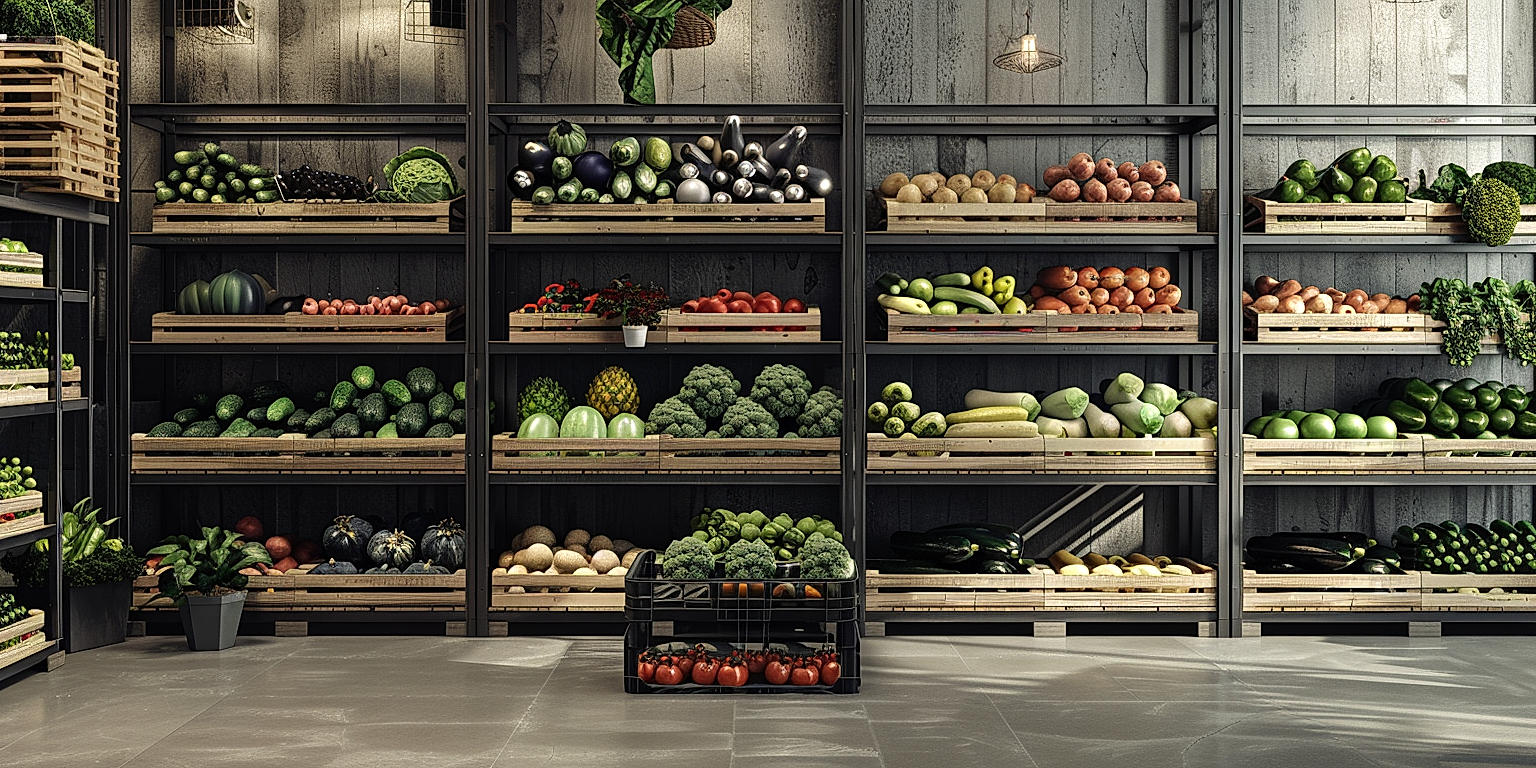Maximizing the shelf life of produce is paramount in reducing food waste and optimizing profitability.
Ensuring freshness requires prioritizing efficient and sustainable storage solutions.
Despite the variety of produce, they all share a common need for environments that maintain their unique freshness requirements.
This involves careful temperature control, humidity management, and sometimes, specific gas composition.
Optimal storage can greatly enhance the length of time produce stays fresh and salable.
Discover how this critical aspect of the supply chain can be improved upon using innovative technologies and strategies.
Contents
Storage Solutions For Produce Shelf Life Improvement
1. Controlled Atmosphere Storage
In our exploration of storage solutions for produce shelf life improvement, a key method that has proven effective over the years is the concept of Controlled Atmosphere Storage (CAS).
CAS involves the regulation of oxygen, carbon dioxide, and nitrogen levels within storage environments to extend the shelf life of various fruits and vegetables.
This storage method is designed to slow down the ripening process by reducing respiration rates, thus extending the shelf life of the produce.
In most cases, the atmospheric composition of a CAS system consists of reduced oxygen levels (usually below 8%), increased carbon dioxide levels (up to 10-20%), and balance nitrogen.
The CAS environment produces specific atmospheric conditions around the stored goods that not only slow down their ripening but also prevent the spread of spoilage organisms.
The ability to manipulate the atmospheric conditions is what makes this storage method uniquely efficient in maintaining product quality and extending shelf life.
Moreover, CAS has been found to be an environmentally friendly method of storage, as it reduces waste and promotes the efficient use of food resources by extending the usable lifespan of produce.
However, to achieve the optimal conditions in a CAS system, a deep understanding of the produce’s individual gas exchange needs and the interaction between various gases is crucial.
One of the significant advantages of using CAS is that it is able to maintain the texture, flavour, and nutritional content of the produce in storage.
This advantage provides a strong selling point to the end consumer, who is assured of procuring a fresh and high-quality product.
In addition, the concept of CAS fits remarkably well into the idea of farm-to-fork, which emphasizes ensuring that products maintain their quality from their growth at farms to when consumers purchase them.
Furthermore, in the current times when food waste reduction is a significant concern, implementing Controlled Atmosphere Storage is a crucial step in ensuring optimal use of our food resources.
Different produce types require different atmospheric conditions, hence a one-size-fits-all strategy cannot be employed with this method.
Hence, it is crucial to work with experts who understand these needs and are able to customize the system to suit each produce type’s specific requirements.
Despite requiring significant investment initially, the long-term benefits of controlled atmosphere storage are greater cost savings, reduced wastage, and higher profits, making it an investment worth considering.
In summary, controlled atmosphere storage stands as a reliable and sustainable solution to improve the shelf life of produce.
2. Ethylene Inhibitor Application
The application of ethylene inhibitors plays a significant role in shelf-life improvement of produce.
Ethylene, a natural plant hormone, commonly induces ripening and eventual rotting of fruits and vegetables.
The reduction of ethylene levels surrounding the produce can significantly slow down their ripening process extending their freshness and shelf life.
Ethylene inhibitors, when applied effectively, can help in maintaining the quality and prolonging the shelf life of the produce.
Luckily, there are various ethylene inhibitors available in the market today that can be applied to fruits and vegetables.
These substances work by blocking the action of ethylene on produce.
One commonly used ethylene inhibitor is 1-methylcyclopropene (1-MCP).
It is a synthetic compound that has an exceptional ability to bind to the ethylene receptors in fruits and vegetables, preventing ethylene from promoting ripening and senescence.
However, the timing and method of application of these inhibitors are critical to their efficacy.
For most fruits and vegetables, ethylene inhibitors should be applied post-harvest but pre-storage.
This timing ensures that the inhibitors can work their fullest to prevent premature ripening and extend the shelf life of the produce.
Moreover, the inhibitors need to be applied correctly to cover the whole surface of the produce as uniformly as possible for optimal results.
It is also a good practice to monitor the ethylene levels in the storage environment even after the application of the inhibitors
Monitoring helps to gauge the effectiveness of the inhibitors and determines whether reapplication might be necessary.
In sum, using ethylene inhibitors is an effective method that contributes to the improvement of the shelf life of fresh produce.
3. Efficient Cold Storage
The topic of efficient cold storage as a solution for produce shelf life improvement cannot be overstated, as it plays a vital role in determining the longevity and freshness of various products.
Primarily, cold storage operates by reducing the temperature in which produce is kept, effectively slowing down the process of spoiling.
With the right temperature, the metabolic reactions of fruits and vegetables are decreased, enhancing their shelf life.
The science behind efficient cold storage is centered on manipulating the produce’s environment to delay the process of ripening or decay.
Moreover, proper cold storage also helps to limit the growth of pathogenic bacteria that can lead to spoilage, thereby maintaining the quality of the produce.
A key example of efficient cold storage in action can be observed in the seafood industry, where products are often flash frozen at sea to maintain their freshness and quality.
Yet, it is not just the temperature that matters in cold storage but also the humidity level.
By closely regulating humidity within these cold storage units, the loss of moisture from produce can be minimized, thereby maintaining their weight and firmness.
Not only does efficient cold storage contribute to extended shelf life, it also assists in preserving the original flavor, color, and texture of the produce.
However, it should be noted that different types of produce have their unique cold storage requirements.
For instance, tropical fruits like bananas may require a warmer temperature compared to apples or oranges, understanding these distinctions is critical to achieving optimal storage conditions.
Digital technology and advanced refrigeration systems have greatly improved the efficiency of cold storage.
Incorporating these technologies into storage systems allows for the precise control of temperature and humidity, accommodating changes as per the specific needs of different varieties of produce.
This facilitates a controlled environment where perishable goods can be stored for longer periods without losing their quality or nutritional content.
In conclusion, efficient cold storage is a crucial aspect that influences the shelf life of produce.
Its importance goes beyond merely storing goods in a cooled environment but extends to understanding the unique needs of different produce to create the optimal conditions for their preservation.
4. Modified Atmosphere Packaging
When it comes to prolonging the shelf life of fresh produce, Modified Atmosphere Packaging (MAP) offers an innovative solution worth discussing.
MAP is a vital technology that involves optimizing the internal atmosphere of a package to adequately extend the storage time and maintain the quality of fresh produce.
This careful adjustment of gas composition significantly reduces the rate of food spoilage, thereby sustaining product freshness for a more extended period.
It essentially slows down the oxidation process and prevents the growth of spoilage organisms such as bacteria, molds, and yeasts.
In a MAP system, the air inside a food package is replaced with a protective gas mix, typically a combination of oxygen, carbon dioxide, and nitrogen, to suitably modify the environment.
The precise mix of these gases will depend on the type of produce, its respiration rate, storage temperature, and the gas permeability of the packaging film.
For example, an environment with high carbon dioxide and low oxygen levels would be ideal for extending the shelf life of apples, grapes, tomatoes, and strawberries.
In addition to its preservative function, MAP also enhances the visual appeal of the product by preventing color and texture changes.
This technology has played a crucial role in promoting product freshness and enabling year-round availability of fruits and vegetables, regardless of their growing seasons.
Despite its advantages, the successful implementation of Modified Atmosphere Packaging requires careful monitoring of the package environment, as imbalanced gases could lead to detrimental results, such as product anaerobic respiration or excess moisture accumulation inside the package.
It is also essential to note that MAP does not replace the need for refrigeration, but rather supplements it, as low temperatures continue to play a significant role in slowing down microbial activity and enzymatic reactions within stored produce.
Moreover, consumer safety should always be a top priority in MAP implementation; hence, stringent food safety guidelines and standards must be observed to prevent possible dissemination of pathogenic microorganisms.
While MAP is primarily used for fresh produce, it is also applicable to a wide range of perishable items, including dairy products, meat, poultry, seafood, and ready-to-eat meals, highlighting its flexibility and wide-ranging applicability.
In conclusion, Modified Atmosphere Packaging presents a pioneering and effective storage solution in shelf life improvement, benefitting not just retailers and consumers, but also detailing its significance within the food supply chain.
5. Vacuum Packaging for Freshness
When considering storage solutions for prolonging the shelf life of produce, Vacuum Packaging for freshness is a significant technique to consider.
This method utilizes the principle of removing air from the packaging before sealing it.
The goal is to create an anaerobic environment that reduces the speed at which produce degrades.
This is due to the fact that Oxygen, a major catalyst in the degradation of fruit and vegetables, is significantly reduced.
Consequently, this technique proves to be highly effective in slowing down the ripening process and maintaining the freshness of produce over extended periods.
Most importantly, vacuum packaging is a tool to minimize the presence of microorganisms which can contribute to the spoilage of produce.
These organisms typically require oxygen to live and thrive, and their growth is inhibited in an environment where oxygen is scarce.
Furthermore, vacuum packaging is known to preserve the natural color, texture, and aroma of different fruits and vegetables.
This is because the technique minimizes the exposure of produce to the environmental factors that can lead to quality degradation.
Apart from maintaining freshness, vacuum packaging also increases the efficiency of cold storage processes by allowing produce to be stored more neatly and conserves space.
It must be noted, however, that while vacuum packaging has many advantages, its effectiveness often varies with the type of produce.
Different fruits and vegetables have varied rates of permeability, respiration rates, and susceptibility to degradation, which can make some more suitable for vacuum packaging than others.
Therefore, a comprehensive understanding of the characteristics of different produce is vital for successful application of vacuum packaging techniques.
Ultimately, while not all produce may be suitable for vacuum packaging, its use holds great potential for improving the shelf life and quality of many fruits and vegetables.
It is clear that vacuum packaging for freshness is a promising solution in the suite of storage solutions aimed at improving produce shelf life.
6. Moisture Reduction Approaches
For efficient preservation of produce, one of the common methods employed is the reduction of moisture content.
This approach aims at significantly decreasing the food’s water activity, thereby prolonging its shelf life.
Moisture reduction can be attained through different methods, with the most common being dehydration/drying.
The efficacy of moisture reduction in extending shelf life is due to its ability to hinder the growth and activity of spoilage microorganisms, as the latter often thrive in moist conditions.
Dehydration, in particular, works by extracting water through heating, a method that can significantly enhance the shelf life of various types of produce.
Apart from dehydration, other popular moisture reduction techniques include salting, smoking, and sugaring.
These traditional methods, albeit effective, come with the drawback of potentially altering the food’s original taste and nutrition levels.
Therefore, modern preservation techniques aim at achieving moisture reduction without jeopardizing the natural properties of the produce.
Hence, innovative approaches such as vacuum drying and osmotic dehydration have been introduced to minimize moisture levels while retaining the food’s original flavor and nutritional content.
Vacuum drying operates by reducing atmospheric pressure, making it viable for water vapor to be easily extracted from the produce, thus reducing its moisture content.
On the other hand, osmotic dehydration involves immersing the produce in concentrated solutions to draw out water.
While these methods show promise, they are still under development and require optimization before widespread commercial application.
Nevertheless, with the rapid advancement in technology, moisture reduction approaches are continually being refined for better effectiveness and efficiency.
Thus, their potential in improving shelf life remains a promising area in produce storage solutions.
Regardless of the method employed, a precise control in moisture reduction is vital to strike a balance between shelf life extension and preservation of the produce’s innate qualities.
This balance is essential as aggressive moisture reduction may lead to over-drying, resulting in unwanted changes in texture and other quality attributes.
7. Innovative Edible Coatings
When it comes to preparing the best storage solutions for enhancing produce shelf life, innovative edible coatings are taking the lead.
The research and development of these coatings have seen rapid advancements in recent years, revealing that they are incredibly promising when it comes to increasing the lifespan of multiple types of produce.
When applied to the surface of fruits and vegetables, a thin edible coating forms a semi-permeable barrier.
This barrier reduces respiration rate, decreasing the rate at which produce deteriorates.
It also controls moisture loss, maintaining the freshness of the produce for a longer period.
Edible coatings also work to inhibit the growth of harmful microorganisms on the surface of the produce, improving both safety and shelf life.
These innovative coatings often consist of food-derived components, such as lipids, polysaccharides, proteins, and resins, making them completely safe for consumption.
The formulations of these coatings can be tailored to meet specific needs of different produce, checking on factors like gas permeability, mechanical strength, and moisture sensitivity.
Advancement in technology has brought coatings that can carry active compounds like antioxidants and antimicrobials, further enhancing the safety profile of the coated produce.
Not only do these coatings increase the shelf life of fruits and vegetables, but they can also advance their nutritional profile.
Recent studies have indicated that some innovative coatings can be used as a carrier for nutritional enhancers, adding a significant nutritional punch to the produce.
This innovative approach is proving particularly beneficial in addressing the problem of post-harvest losses in produce and in reducing food waste.
The implementation of edible coatings is cost-effective and easy to apply, making it a feasible solution for large scale operations.
Furthermore, innovative edible coatings are environmentally friendly, contributing to sustainability in the food industry.
Looking into the future, it’s clear that innovative edible coatings will play an essential role in better storage solutions and enhancement of produce shelf life.
The Bottom Line
Without a doubt, emerging techniques and technologies for food preservation are significantly extending the shelf-life of various food items, thus reducing waste and enhancing food security on a global scale.
Controlled atmosphere storage, ethylene inhibitor application, efficient cold storage, modified atmosphere packaging, and vacuum packaging for freshness are particularly notable for their proven effectiveness in maintaining food quality and preventing spoilage over extended periods.
Simultaneously, newer strategies such as moisture reduction approaches and innovative edible coatings are showing promising results in terms of improving preservation and extending shelf-life.
As such, embracing these methods on a broader scale can further optimize food preservation efforts, supporting a more sustainable and less wasteful food supply chain.




